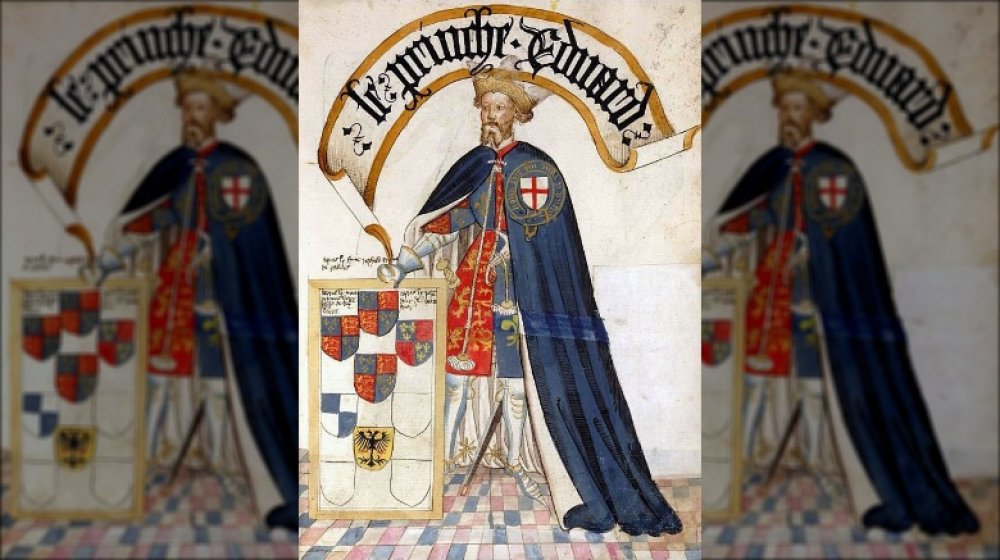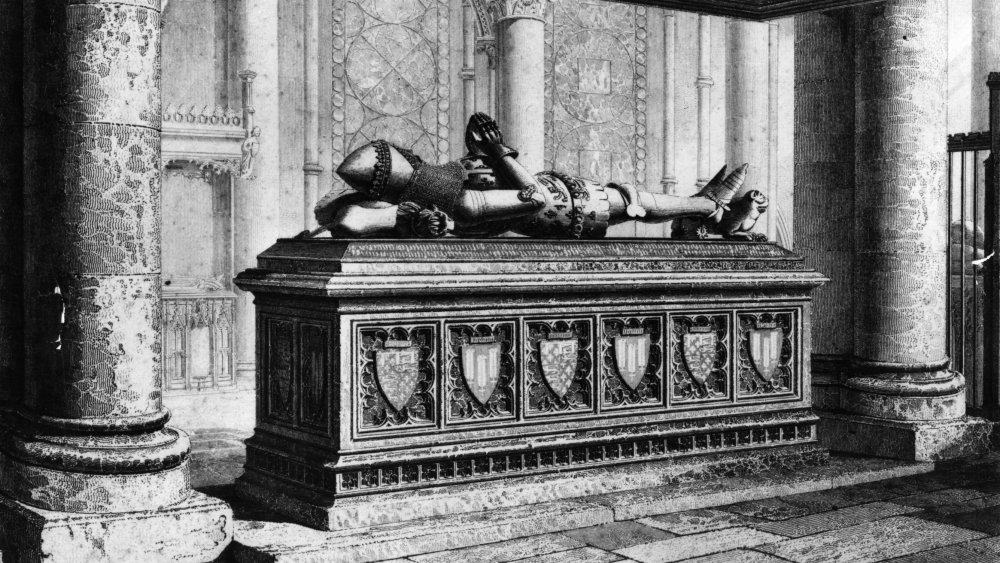The Real Reason Edward, Prince Of Wales, Was Known As 'The Black Prince'
Ah, nicknames. Martha Cannary becomes Calamity Jane. James Butler Hickok turns into Wild Bill. There's the whole "What's in a name?" thing from Romeo and Juliet, though Dirty Dave Rudabaugh really was hygienically challenged in the days when Wyatt Earp was running him to ground. Nicknames aren't just limited to the American Frontier — it's a human thing, and sometimes there's quite a lot in the name, even a nickname.
Witness Edward, eldest son of England's King Edward III, born in 1330 and made Prince of Wales a mere 13 years later. (Maybe he showed unusual promise.) At least one legend has it that Edward was known as the Black Prince (though only after his death) because he favored black armor, according to BBC History. (He earned his spurs at the tender age of 16.) Fair enough. But the historical record is pretty clear that Edward made some sketchy choices that resulted in the deaths of a fair number of innocent people. Did that equal a pitch-black soul? You be the judge.
Maybe he thought he had some explaining to do
Perhaps the act most closely associated with the darker aspects of Edward's life occurred during the Hundred Years War, says the BBC. Edward had been named Prince of Aquitaine in 1362. A friend of Edward's had betrayed him by welcoming French troops into the town of Limoges and held it against the English troops. Edward, miffed, stormed the town, and a massacre resulted. Residents young and old, of whatever station in life, pleaded for mercy. Edward ordered a slaughter. How many people died? Depends on who you believe. One chronicler put the number at 3,000. A letter from Edward himself, discovered around 2014, puts the numbers at 100 soldiers and 200 civilians. Not unusual for the times; warfare was just as brutal then as now, and in some ways more so. Whatever the actual numbers, the incident at Limoges was still a cold, hard tragedy.
He never did ascend to the throne of England; he died at 46, before his father, the king. There are indications that toward the end of his life, Edward tried to atone for at least some of his sins. Traditionally, English royalty were buried at Westminster Cathedral, but Edward chose to be entombed at Canterbury Cathedral, traditionally a site, not of royalty, but of penance and pilgrimage.

